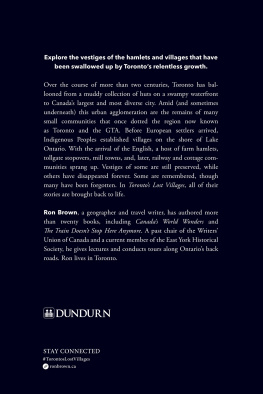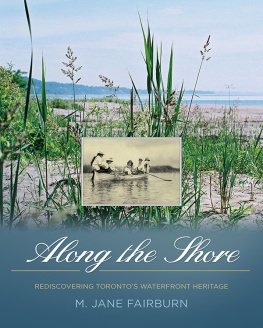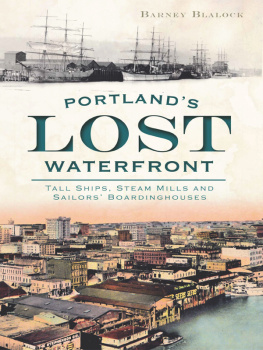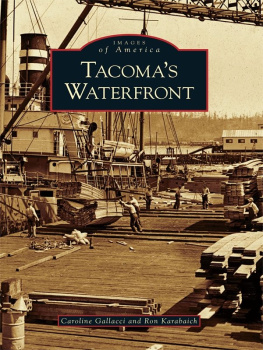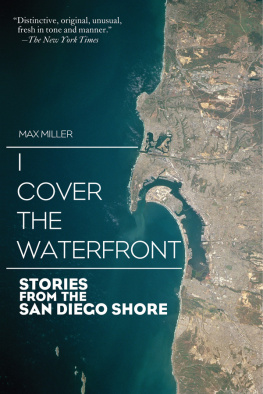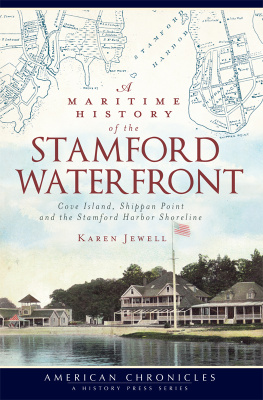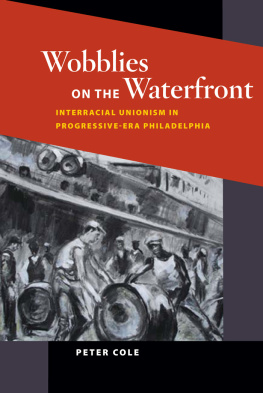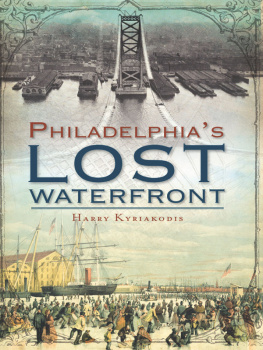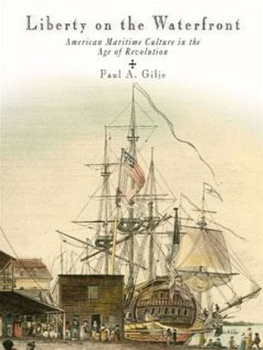Acknowledgments
The editors would like to acknowledge the support of the Social Science and Humanities Research Council of Canada, Standard Grant #410-2005-2071.
Jennifer Bonnell wishes to acknowledge the helpful comments received at the Canadian Historical Annual Meeting in Vancouver, BC, in June 2008, and the insightful critical commentary provided by members of her dissertation committee: Dr Ruth Sandwell, Dr Cecilia Morgan, and Dr William J. Turkel. The research and writing of this chapter were conducted with generous support from the Social Sciences and Humanities Research Councils Canada Graduate Scholarship. Image purchases were made possible with support from the Changing Urban Waterfronts project, directed by Dr Gene Desfor with support from the Social Sciences and Humanities Research Council. Bonnell also wishes to acknowledge the Toronto and Region Conservation Authority, the City of Toronto Archives, the Todmorden Mills Museum, and Jordan Hale for providing the images used in .
Susannah Bunce would like to thank the editors of this volume and the support of Social Science and Humanities Research Council, Standard Research Grant #410-2005-2071, in the production of doctoral dissertation research from 20057. She also wishes to acknowledge the permission granted by Waterfront Toronto to reproduce the image in .
Tenley Conway would like to acknowledge insights provided by Stefan Cermak, and technical-data gathering and map-classification work completed by Mike Lackner and Namrata Shrestha. She would also like to thank Gene Desfor and Jennefer Laidley for sharing their knowledge of the Toronto waterfront and providing insightful comments on earlier versions of this chapter. This work was supported by Social Sciences and Humanities Research Council of Canada Grant #510382.
Gene Desfor would like to thank the Toronto Port Authority for permission to reproduce the images in .
Gene Desfor and Lucian Vesalon gratefully acknowledge permission from Blackwell Publishing Ltd. to use parts of the article Urban Expansion and Industrial Nature: A Political Ecology of Torontos Port and Industrial District in . The original article was published in International Journal of Urban and Regional Research 32(3): 586603.
Paul S.B. Jackson thanks W. Scott Prudham, Gene Desfor, and the entire Changing Urban Waterfronts Project for supporting this research, both financially and intellectually. Jackson also acknowledges the Toronto Public Library for its provision of the images used in his chapter.
Jennefer Laidley acknowledges an earlier version of .
Michael Moir wishes to thank Jeff Hubbell, records manager and archivist for the Toronto Port Authority, for his assistance and support while accessing the records of the Toronto Harbour Commission, and Carolyn King, cartographer with York Universitys Department of Geography, for her work on the maps in .
Chris Sanderson and Pierre Filion wish to acknowledge SSHRC Major Collaborative Research Initiative funding for the project Public Policy in Municipalities, through which the research on which their chapter is based was conducted.
1 Planning for Change: Harbour Commissions, Civil Engineers, and Large-scale Manipulation of Nature
MICHAEL MOIR
European settlement in North America began at the waters edge, where sheltered harbours offered protection for water-borne vessels essential for the basic needs of colonial expansion: defence and the movement of people, information, and commodities between empires and their outposts. Settlement was drawn to locations surrounded by rich agricultural land that could support a growing population and generate surplus produce for trade. Access to a regional network of waterways promoted the exchange of staples and manufactured goods, and as commerce increased, so did the size of vessels. These boats and ships required an infrastructure of wharves, quays, cranes, and yards that became a port, an area where ships could be loaded or unloaded, tendered, repaired, and berthed when not in service. Over time, ports took on a look of permanence. As Gordon Jackson remarked in his history of British ports, Few things in the world of modern redundant industry are quite so vast, solid and impressive as docks and their related works. They look, for the most part, as if they have always been there and always will be (1983: 10). Such appearances are deceiving. Ports are developed within the context of an environment that changes through the interaction of land, wind, and waves. Because of the constancy of these forces, harbours will never be the same tomorrow as they are today. Erosion and alluvial deposits relentlessly reshape coastlines and harbour beds, confounding those who require a stable platform to operate and sustain the ports infrastructure. Regulatory and development bodies, be they private corporations or public agencies, have been established to manage this interaction between nature and socio-economic expectations of permanence.
The historical study in this chapter examines such relationships between nature and society within the context of Torontos waterfront, where commissions of varying structure and influence have been at work since 1833. The Toronto Harbour Commission is the best known of these organizations because of its longevity and the dramatic changes it effected to the waterfronts configuration and land use as the result of its Waterfront Plan of 1912. Accounts of its creation by the federal government in 1911 have largely attributed the Commissions considerable development powers to the ineffectiveness of its predecessor, the Harbour Trust, and in particular to the failure of the Trust to stop Torontos port from deteriorating into a series of ramshackle wharves that discouraged shipping (Careless 1984; OMara 1976; Mellen 1974). The port, however, was not the focus of the Trust nor of the previous committee of commissioners. These nineteenth-century bodies were occupied with the harbour and, in particular, its preservation as a safe and navigable body of water. Merchants, manufacturers, and civil engineers struggled to react to natural changes and human abuses of the harbour, until rapid industrialization and the increasing involvement of municipal and federal governments led to a transition in governance from harbour commission to port authority, and the almost complete reconfiguration of Torontos waterfront.
Military Arsenal to Commercial Port, 17931850
Even before he set eyes on the place, John Graves Simcoe, the lieutenant governor of Upper Canada, selected Toronto as a location for permanent settlement. After examining maps of the colony and speaking with those acquainted with its geography, Simcoe described Toronto as the natural arsenal of Lake Ontario, offering a much more defensible place than either Kingston or Niagara (Firth 1962: xxxiiixxxiv). While he intended to focus his attention on the development of London as the site of Upper Canadas capital, Great Britains home secretary, Henry Dundas, made it clear that the settlement of York (as Simcoe had named Toronto) was the priority, since Simcoes primary objective was the maritime defence of the colony. When Simcoe finally visited Toronto in May 1793, he found a place very much to his liking. A narrow spit guarded the harbours western entrance, and it could be fortified by a few heavy canons to control the movement of vessels. The harbour offered a Situation admirably adapted for a Naval Arsenal and Dock Yard, and, mentioned in passing almost as an afterthought, a place for a Town on the main Shore (ibid.: 4). The scene was later described by ):
The harbour of York is nearly circular, and formed by a very narrow peninsula stretching from the western extremity of the township of Scarborough in an oblique direction, for about six miles, and terminating in a curved point nearly opposite the garrison; thus enclosing a beautiful basin about a mile and a half in diameter, capable of containing a great number of vessels, and at the entrance of which ships may lie with safety during the winter. The formation of the peninsula itself is extraordinary, being a narrow slip of land, in several places not more than sixty yards in breadth, but widening towards its extremity to nearly a mile; it is principally a bank of sand with a very little grass upon it; the widest part is very curiously intersected by many large ponds, that are the continual resort of great quantities of wild fowl; a few trees scattered upon it greatly increase the singularity of its appearance; it lies so low that the wide expanse of Lake Ontario is seen over it: the termination of the peninsula is called Gibraltar Point, where a blockhouse has been erected. (Bouchette 1815: 6067)


